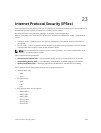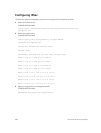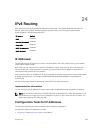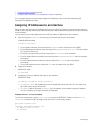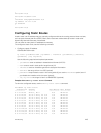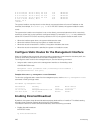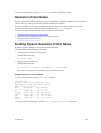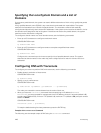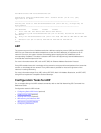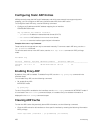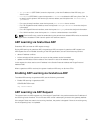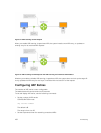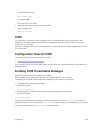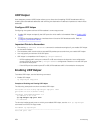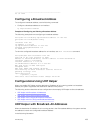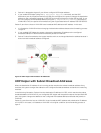
Dell#traceroute www.force10networks.com
Translating "www.force10networks.com"...domain server (10.11.0.1) [OK]
Type Ctrl-C to abort.
----------------------------------------------------------------------
Tracing the route to www.force10networks.com (10.11.84.18), 30 hops max, 40
byte packets
----------------------------------------------------------------------
TTL Hostname Probe1 Probe2 Probe3
1 10.11.199.190 001.000 ms 001.000 ms 002.000 ms
2 gwegress-sjc-02.force10networks.com (10.11.30.126) 005.000 ms 001.000 ms
001.000 ms
3 fw-sjc-01.force10networks.com (10.11.127.254) 000.000 ms 000.000 ms 000.000
ms
4 www.dell.com (10.11.84.18) 000.000 ms 000.000 ms 000.000 ms
Dell#
ARP
The system uses two forms of address resolution: address resolution protocol (ARP) and Proxy ARP.
ARP runs over Ethernet and enables endstations to learn the MAC addresses of neighbors on an IP
network. Over time, the system creates a forwarding table mapping the MAC addresses to their
corresponding IP address. This table is called the ARP Cache and dynamically learned addresses are
removed after a defined period of time.
For more information about ARP, refer to RFC 826, An Ethernet Address Resolution Protocol.
Proxy ARP enables hosts with knowledge of the network to accept and forward packets from hosts that
contain no knowledge of the network. Proxy ARP makes it possible for hosts to be ignorant of the
network, including subnetting.
For more information about Proxy ARP, refer to RFC 925, Multi-LAN Address Resolution, and RFC 1027,
Using ARP to Implement Transparent Subnet Gateways.
Configuration Tasks for ARP
For a complete listing of all ARP-related commands, refer to the Dell Networking OS Command Line
Reference Guide
.
Configuration tasks for ARP include:
• Configuring Static ARP Entries (optional)
• Enabling Proxy ARP (optional)
• Clearing ARP Cache (optional)
• ARP Learning via Gratuitous ARP
• ARP Learning via ARP Request
• Configuring ARP Retries
IPv4 Routing
449



